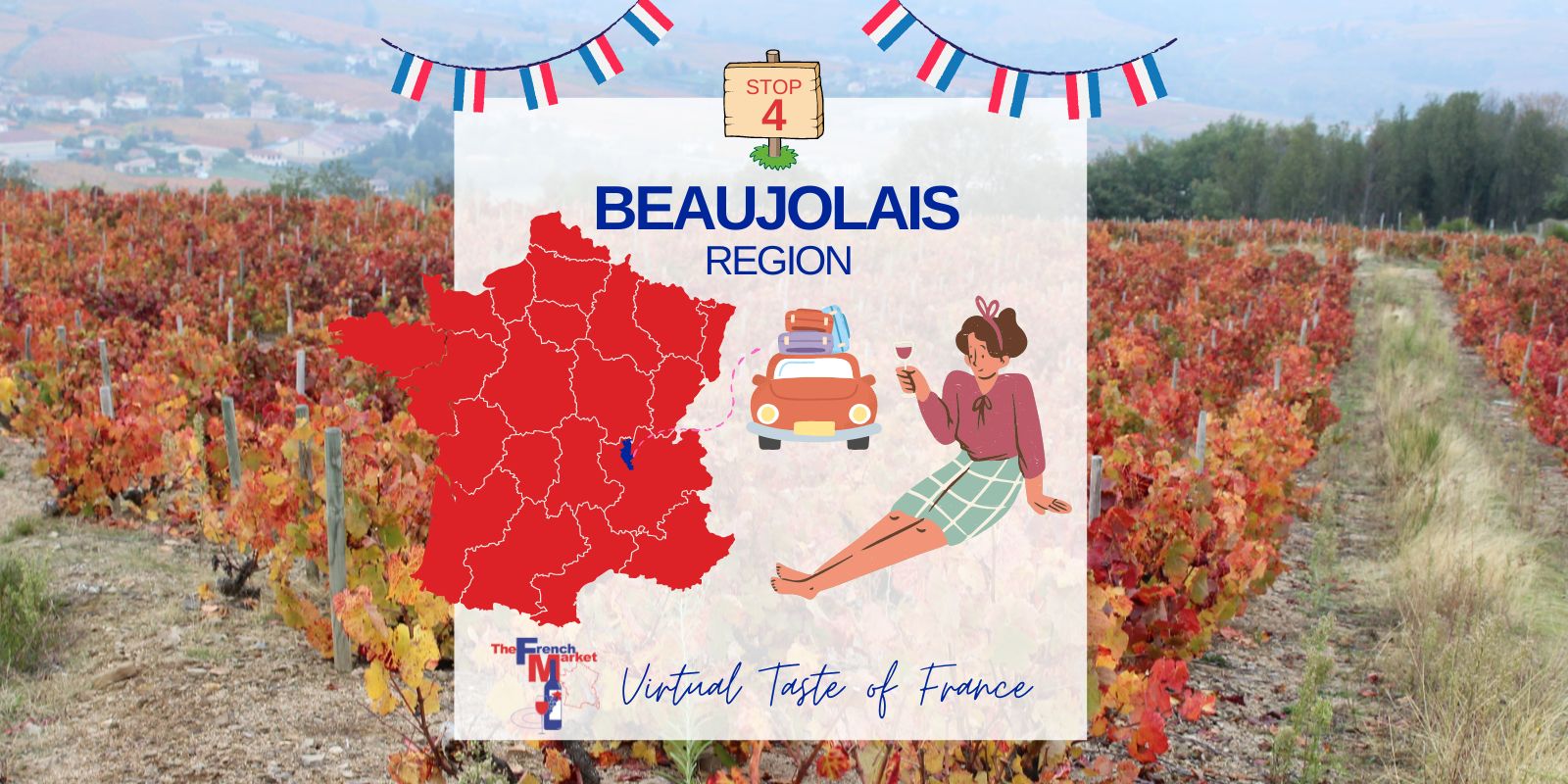Virtual Taste of France – Stop 4: Beaujolais
Following on from Burgundy, the next stop on our Virtual Taste of France is neighbouring Beaujolais, located immediately to the south. The Beaujolais wine-growing area is relatively small and runs along the western bank of the Saône river from just south of Mâcon to the city of Lyon. It is dissected into northern and southern sections by the Nizerand river, with most of the more expensive Beaujolais wines coming from the northern section.
While the Gamay grape appears occasionally in Burgundy, Beaujolais is its true spiritual home, and in fact few wine regions in the world are so focused on a single grape variety.
Beaujolais is probably best known for its young, light red wines made from Gamay noir grapes. These tend to be very light-bodied and relatively high in acidity. Basic Beaujolais is the classic bistro wine of Paris – fruity, easy-drinking and traditionally served in one-pint “pots”.
The region’s rise to prominence began in the 19th century when its youthful, fruity wines became popular. Because these wines were not barrel aged, they were often sold and drank only weeks after harvesting (with fermentation often finishing while wines were in transit). The 19th century also saw a split in the region, where the southern half became more focused on younger, fruity wines, influenced by the demands of drinkers in nearby Lyon, whereas the north became more focused on making more age-worthy wines like neighbouring Burgundy.
The Gamay grape is an early-ripening, acidic variety which lends itself to the carbonic maceration method of wine-making which produces fresh, fruity, low-tannin wines. Whereas other methods call for grapes to be destemmed and crushed, with carbonic maceration whole clusters of grapes are piled into a vessel. The weight of the grape clusters on top crushes those on the bottom layers. The resultant juice starts to ferment, saturating the grapes above with carbon dioxide. This in turn causes intra-cellular fermentation – i.e. the grapes ferment as a whole berry, the fermentation beginning from within the fruit. After around 4-8 days, the juice is racked off (known as the ‘free run”) and the remaining juice is pressed, then the results areare blended together. From here the juice finishes fermenting and is completed as a ‘regular’ wine.
The 3 classifications of Beaujolais wine are:
Beaujolais AOP
The biggest appellation, consisting of 96 villages, mostly in the south of the region, these are easy drinking wines with acidity and low tannin. As well as grapey and red berry flavours, you’ll often find notes of tropical banana, a result of the carbonic maceration process.
Beaujolais Villages AOP
These areas are a bit more specialised, and their wines tend to be a little darker both in colour and character.
Cru Beaujolais
The highest category of classification within ten villages/areas in the foothills of the Beaujolais mountains. Unlike in Burgundy and Alsace where we’ve already seen the term used, in Beaujolais “cru” refers to an entire area rather than a specific vineyard. These wines represent the best of the region and are often more age-worthy than the other classifications, which are meant to be enjoyed young.

